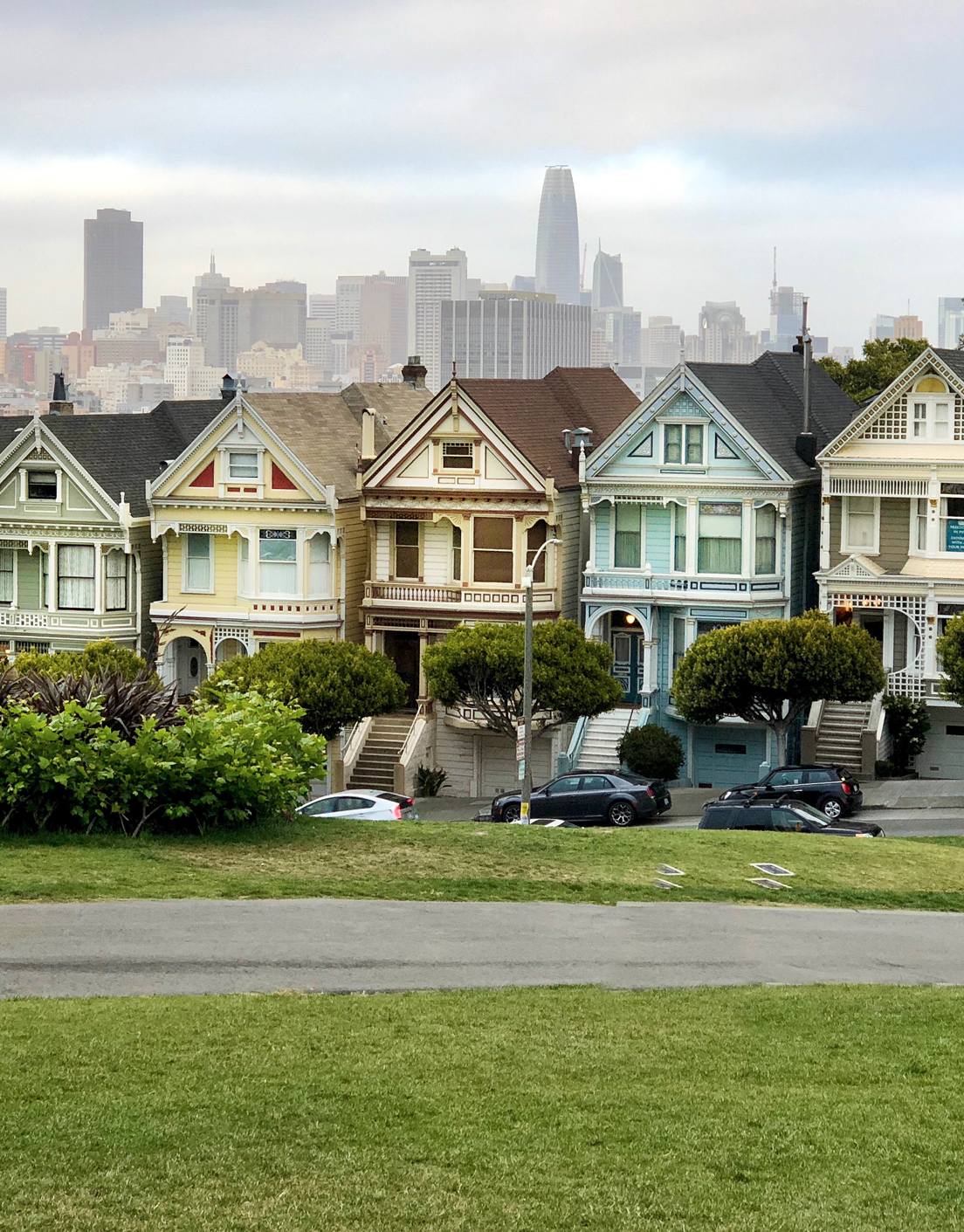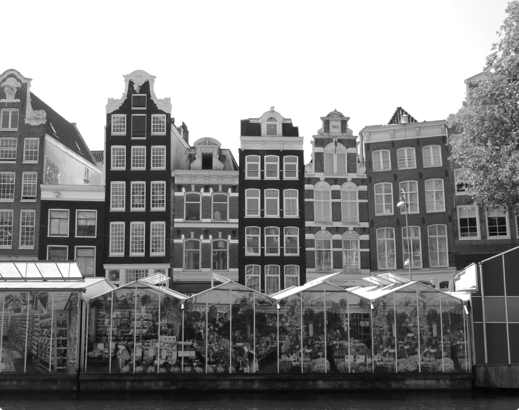…On the Perimeter Block, provide attached buildings on Small Plots.

__Problem-statement: It is economical and often beneficial to attach smaller buildings that are legally and physically separate, and line them in a row on the street. But this form of construction also introduces a number of challenges.__
Discussion: Row buildings (including rowhouses and other attached buildings) are buildings that are constructed in a row along the street, but at different times by different owners. There are important advantages to this kind of development, including the ability to support finer-grained, better-adapted structures. Another important benefit is the typically greater variety and complexity of the streetscape. Even when a single “master planned” structure is designed as a composition of separate buildings, it almost never reaches the same level of informal variety and beauty. Indeed, many of the most beautiful streetscapes in the world were built in this way.
However, the process of constructing independent but attached buildings introduces many challenges. At any time, one of the houses may be removed or a new house or part of a house added, meaning that the adjoining houses have to maintain wholly independent side wall structures. Moreover, the construction process has to be coordinated with regard to impacts on adjoining buildings, including shared flashings and other elements. That means the owners need to be bound by an agreement or regulation that specifies how these independent construction activities will be managed so as to minimize problems for adjacent buildings.
Let us suppose that two adjacent plot owners are under an agreement to build attached buildings, but their plans are not standardized. One unit may be taller than another, or wider than another. Furthermore, one party may make changes later that will expose parts of the other’s wall. In each case, care must be taken to protect the separate buildings from damage by water, fire and other dangers. This requires that a number of steps be taken to protect each side:

The beautiful row buildings of Amsterdam, often with radically different heights and volumes. Photo: Filip Maljković via Wikimedia Commons.
There is another serious problem for many row buildings, which is the amount of natural light that enters the building. The narrower and deeper the building, the less light will enter its interior (except by skylights and light wells, which are of limited benefit). One solution is to jog either the front or back wall of the building, to create an “L” shape. Another solution is to create small courtyards or light wells that bring light into the interior. A third solution, and the simplest, is to keep the depth of the building quite shallow, while the width is greater — at least 6 meters or 20 feet, or wider.¹
__Therefore: Make row buildings wide and shallow, and provide natural light to the interior with light wells or L-shaped wall jogs as needed.__

For residential row buildings, create Row Houses with shallow depth and adequate interior light. Create layers of room like spaces or Place Network along the fronts of the row buildings, and provide Human-Scale Detail. …
notes
Image: Alex Wolo via Unsplash
See more Building Patterns